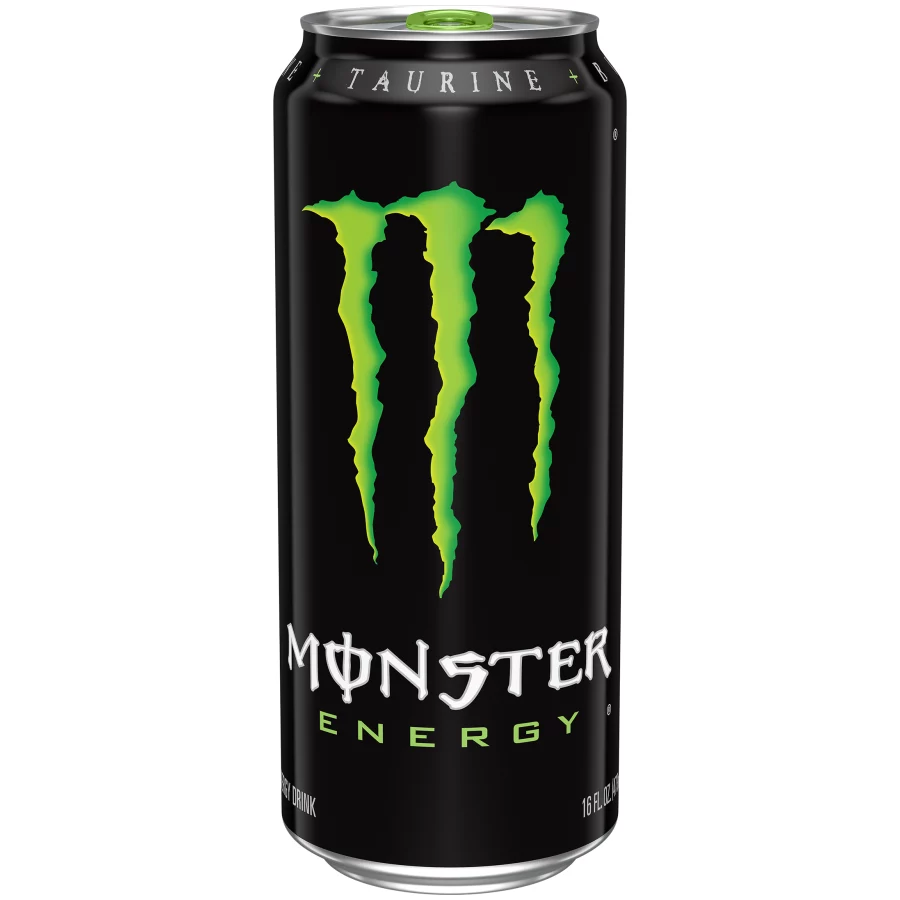How Unhealthy is Monster Energy?
April 18, 2023
You’re probably familiar with energy drinks such as redbull, bang, rockstar, but I specifically want to talk about monster energy. People love to say that energy drinks are awful, terrible and detrimental to your well being. What I want to know is, is monster energy really that bad for you? Or are people blowing it out of proportion?
I’m sure you have read the nutrition facts on the side of a can, box, or bag and seen more than a few ingredients you can’t even begin to pronounce. Let alone, know what they even are. So let’s break down each basic ingredient in monster energy, what they are, what they do, and how it affects us.
Before getting to the ingredients with scientific names, let’s talk about the basic things listed inside the nutrition facts box. Keep in mind that all the nutritional information I’m gathering is based off of the “original” flavor of monster energy, so these stats will differ based on the flavor, but it’s still a solid comparative base for monster as a whole.
Let’s list the basic information going by amount per can. In each 16 fluid ounce can of monster there are about 210 calories, 0g total fat, 370 mg sodium, 54g total carbs, 54g sugar, and 0 protein.
By this information alone, we can assess that it already has a tad bit too much sugar and a bit of a high calorie count. The added sugar intake limit per day is 50g, says the Food and Drug Administration. The calories aren’t that big of a deal in comparison to the recommended daily calorie intake (2,000-2,500) but the issue is more about getting calories from a drink instead of actual healthy food.
Moving on to what we really want to know, what are these long ingredient names and what do they mean? Without further delay, allow me to enlighten you on what those scientific nonsense words are. All information is taken from the American Chemical Society and National Institutes of Health.
Taurine. With similar chemistry to other amino acids, Taurine is found in meat, fish, and dairy products. When combined with caffeine, Taurine is said to improve mental performance, but there isn’t enough information to completely back this up.
Sodium Citrate. When being used in an edible setting, Sodium Citrate serves to regulate the acidity of foods and drinks. In the medical world, it is used as a blood clotting inhibitor.
Panax ginseng. Not to be confused with other types of ginseng, Panax ginseng is a herb that serves many different healing purposes. Despite it’s reputation of healing, it’s an incredibly common ingredient among almost all energy drinks.
L-carnitine. A chemical made in the brain, liver and the kidneys, it’s what turns our body fat into energy. When paired with L-tartrate (another ingredient in Monster) it’s used as a dietary supplement, it may prevent muscle weakness and exercise fatigue.
Sorbic acid. Used frequently in wines, cheeses, baked goods, fresh produce and refrigerated meat and shellfish, Sorbic acid is used as one of the most popular food preservatives. Its main use is to prevent the growth of mold, allowing food to be stored and shipped all over the world.
Benzoic acid. Sourced mainly from the resin in styrax tree bark (until we started making it synthetically), like Sorbic acid, it is used as a food preservative. It works the best when being used with a food with an acidic pH value, and is commonly used in antifungal procedures.
Niacinamide. As a form of vitamin B3, this chemical can be identified in fish, eggs, milk, meat, green vegetables, and finally, cereals. Niacinamide is what keeps your cells healthy as well as assisting in the function of fats and sugars within the human body.
Inositol. Used in the balancing of chemicals and hormones in the body, it may help mental conditions such as OCD and depression.
Pyridoxine Hydrochloride. This chemical can be used to prevent or treat people with low levels of vitamin B6. With this, it can solve problems with nerves, skin and red blood cells.
Riboflavin. This chemical is essentially just a fancy way of saying “vitamin B2.” Found in eggs, milk, meat, nuts, and green vegetables, Riboflavin is responsible for brain function, skin development.
Maltodextrin. While it is a carbohydrate, Maltodextrin goes through intense processing. Originating from white powder from corn, wheat, rice and potato starch, it is cooked before mixed with enzymes or acids to break it down further. It then goes on to replace sugar, improve texture and taste.
Finally, Cyanocobalamin. Almost identical to Pyridoxine Hydrochloride, this chemical is used to supply vitamin B12 to those who don’t have enough of it. It serves to maintain the health of nerves, blood cells and metabolism.
Going off this information, it seems the only real problem with monsters is the rate at which you consume it. Consuming more than one per day can prove to be unhealthy due to its sugar and synthetic caffeine content, but just one per day shouldn’t cause any harm to a healthy functioning adult. So the next time someone gets all up in your face for drinking monster energy, just know that it’s not as bad as people make it out to be.

